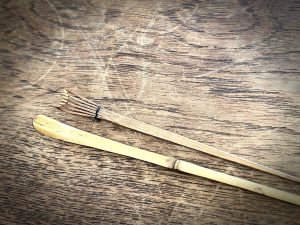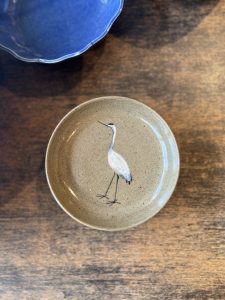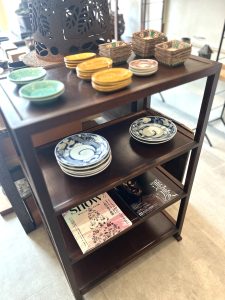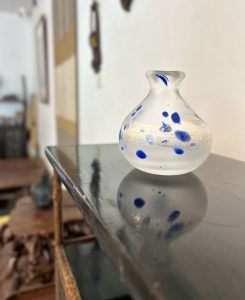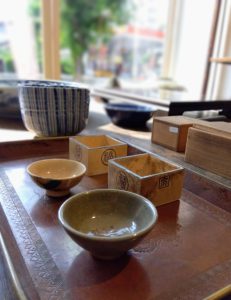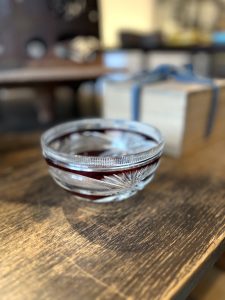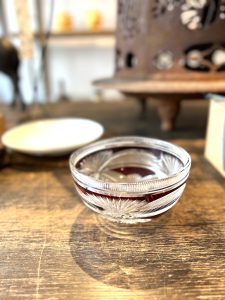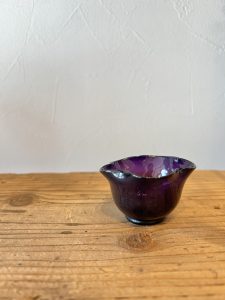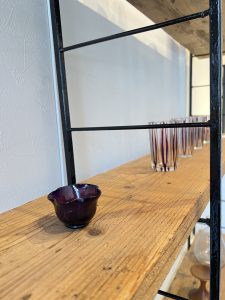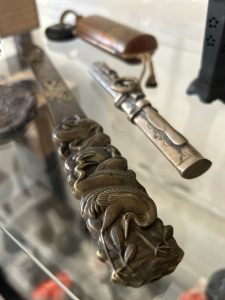にっぽんど真ん中祭りが今年も開催されます(愛知県名古屋市千種区姫路通 骨董買取 古美術品買取)
2025.08.29
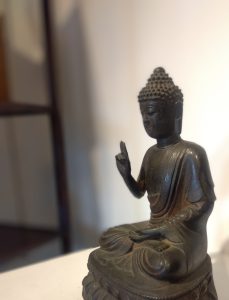
どんより曇り空にもかかわらず、今日も暑いぞ…と、ため息をつきながら家を出たのですが、朝から街中がどことなくざわざわしているのが伝わってきます。それもそのはず、本日29日から31日にかけて、名古屋市内の各所において夏の恒例の大イベント「にっぽんど真ん中祭り」が開催されます。
にっぽんど真ん中祭りは、真夏の暑い名古屋を舞台に繰り広げる日本最大級の踊りの祭典で、通称「どまつり」とも呼ばれます。国内外から集結する約200チーム20,000人が地域色豊かな踊りを披露する誰でも参加できる市民参加型のお祭りです。
29日の前夜祭を皮切りに、久屋大通公園メインステージでのコンテストや中部電力ミライタワー(名古屋テレビ塔)前でのパレードなど、さまざまな審査をへて、31日夜に最高賞の「どまつり大賞」が決まります。審査に参加しないチームも各会場で踊ることができるそうですよ。
その規模は、3日間の来場者数も例年約200万人の観客動員を数え、会期中はメイン会場だけでなく、様々な会場でチームの総踊りが繰り広げられ、名古屋の街中は華やかなお祭り一色になります。華やかな衣装や目を見張るほどの演出を繰り広げますが、何よりもいいのは踊り手ひとりひとりの素敵な笑顔。参加者だれもがはちきれんばかりのエネルギーと笑顔が爆発し、会場中に溢れみんなに元気や感動を与えてくれます。
そしてですね、このお祭りは「観客動員ゼロ=全員参加型」の祭りをコンセプトに掲げており、中でも参加者も観客も一緒に踊りが楽しめるどまつり名物「総踊り」では、2010年に見事ギネス世界記録 “世界一の総踊り”として認定されております。とにかく、参加して踊ればいいんです。
そんな見るだけじゃない誰もが主役になれる感動体験を味わえるのがどまつりの魅力なのですが、ここ愛知県に住んでおりますと、知り合い、もしくは知り合いの知り合いをなどなどをたどっていくうちに「チームに入っているよ」「知り合いが参加するよ」なんてことをよく耳にします。また、このどまつりにかかわらず年間を通してどこかしらでチームの演技をみることもでき、愛知県民の生活にはすっかりなじんでおります。ですが、やはりこのどまつりはチームのみなさんにとっては特別な大きな目標のようです。
感動、興奮、熱気が、ぎゅっと詰まったこの「にっぽんど真ん中祭り」。他県のみなさまも、是非一度暑い名古屋の暑いお祭りに「参加」しにいらしてみてください。
参加した時には、あなたもきっと踊っている…はずです。
ではでは、また。(スタッフT)
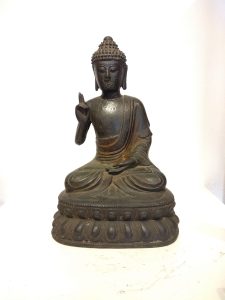
Despite the gloomy, overcast sky, I steeled myself for another scorcher and headed out. Even from the morning, I could sense a buzz of excitement throughout the city. And no wonder—from today, the 29th, through the 31st, Nagoya’s summer staple, the Nippon Domannaka Festival, is taking place at various locations across the city.
The Nippon Domannaka Festival, also known as “Domatsuri,” is Japan’s largest dance festival, unfolding against the backdrop of sweltering midsummer Nagoya. It’s a participatory festival open to everyone, featuring approximately 20,000 dancers from around 200 teams, both domestic and international, showcasing dances rich in regional character.
Kicking off with the eve festival on the 29th, the event features contests on the main stage at Hisaya Odori Park and parades in front of the Chubu Electric Power Mirai Tower (Nagoya TV Tower). After various judging rounds, the top prize, the “Domatsuri Grand Prize,” will be decided on the night of the 31st. Teams not participating in the judging can also dance at various venues.
Its scale is immense, drawing approximately 2 million visitors over the three days. Throughout the event, not only the main venue but also various other venues host group dances by the teams, transforming the streets of Nagoya into a vibrant festival scene. While the dazzling costumes and spectacular performances are impressive, the most wonderful aspect is the radiant smiles on each dancer’s face. Every participant bursts with boundless energy and joy, filling the venue and energizing everyone with their enthusiasm and emotion.
Moreover, this festival is built on the concept of “zero spectators = everyone participates.” Its signature event, the “Grand Dance,” where participants and spectators dance together, was officially recognized by Guinness World Records in 2010 as the “World’s Largest Group Dance.” Simply put, you just need to join in and dance.
That’s the charm of the Domatsuri—it’s not just about watching; it’s an inspiring experience where anyone can be the star. Here in Aichi Prefecture, if you ask around among acquaintances or friends of friends, you’ll often hear things like, “I’m in a team,” or “Someone I know is participating.” Furthermore, regardless of the Domatsuri, you can see team performances somewhere throughout the year; it’s completely integrated into the lives of Aichi residents. But for the teams, this Domatsuri seems to be a special, major goal.
This “Nippon Domannaka Festival” is packed full of emotion, excitement, and passion. Everyone from other prefectures, please come and “participate” in this hot festival in hot Nagoya at least once.
When you do participate, you’ll definitely be dancing too… I’m sure of it.
Well then, see you later. (Staff T)
*******************
ご実家の整理やお片付けなどをされている方のご相談などが多くございます。
お片付けなどくれぐれもご無理のないようになさってくださいませ。
風光舎では古美術品や骨董品の他にも絵画や宝石、趣味のお品など様々なジャンルのものを買受しております。
お片付けをされていて、こういうものでもいいのかしらと迷われているものでも、どうぞお気軽にご相談下さいませ。
また風光舎は、出張買取も強化しております。ご近所はもちろん、愛知県内、岐阜県、三重県その他の県へも出張いたします。
まずは、お電話お待ちしております。
愛知県名古屋市千種区姫池通
骨董 買取【古美術 風光舎 名古屋店】
TEL052(734)8444
10:00-17:00 OPEN
#出張買取#骨董#古美術#骨董品#絵画#版画#茶道具#刀剣#彫刻

